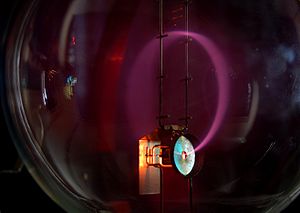
- Image via Wikipedia
A new scientific discovery could have profound implications for nanoelectronic components.
Researchers from the Nano-Science Center at the Niels Bohr Institute, University of Copenhagen, in collaboration with Japanese researchers, have shown how electrons on thin tubes of graphite exhibit a unique interaction between their motion and their attached magnetic field — the so-called spin. The discovery paves the way for unprecedented control over the spin of electrons and may have a big impact on applications for spin-based nanoelectronics. The results have been published in the journal Nature Physics.
Carbon is a wonderfully versatile element. It is a basic building block in living organisms, one of the most beautiful and hardest materials in the form of diamonds and is found in pencils as graphite. Carbon also has great potential as the foundation for computers of the future as components can be produced from flat, atom thin graphite layers, observed for the first time in the laboratory in 2004 — a discovery which elicited last year’s Nobel Prize in Physics.
In addition to a charge all electrons have an attached magnetic field — a so-called spin. One can imagine that all electrons carry around a little bar magnet. The electron’s spin has great potential as the basis for future computer chips, but this development has been hindered by the fact that the spin has proved difficult to control and measure.
In flat graphite layers the movement of the electrons do not affect the spin and the small bar magnets point in random directions. As a result, graphite was not an obvious candidate for spin based electronics at first.
New spin in curved carbon
“However, our results show that if the graphite layer is curved into a tube with a diameter of just a few nanometers, the spin of the individual electrons are suddenly strongly influenced by the motion of the electrons. When the electrons on the nanotube are further forced to move in simple circles around the tube the result is that all the spins turn in along the direction of the tube,” explain the researchers Thomas Sand Jespersen and Kasper Grove-Rasmussen at the Nano-Science Center at the Niels Bohr Institute.









